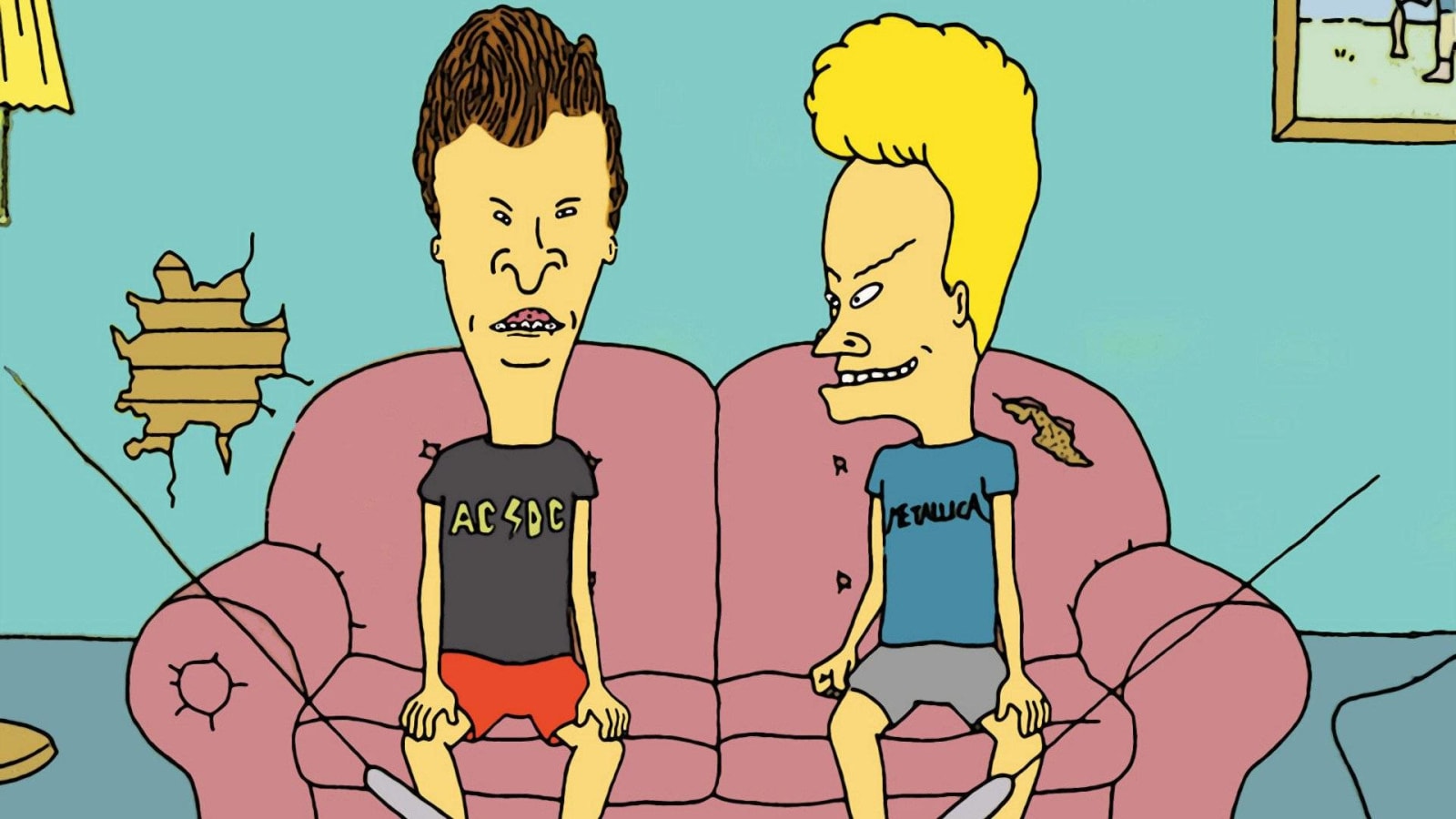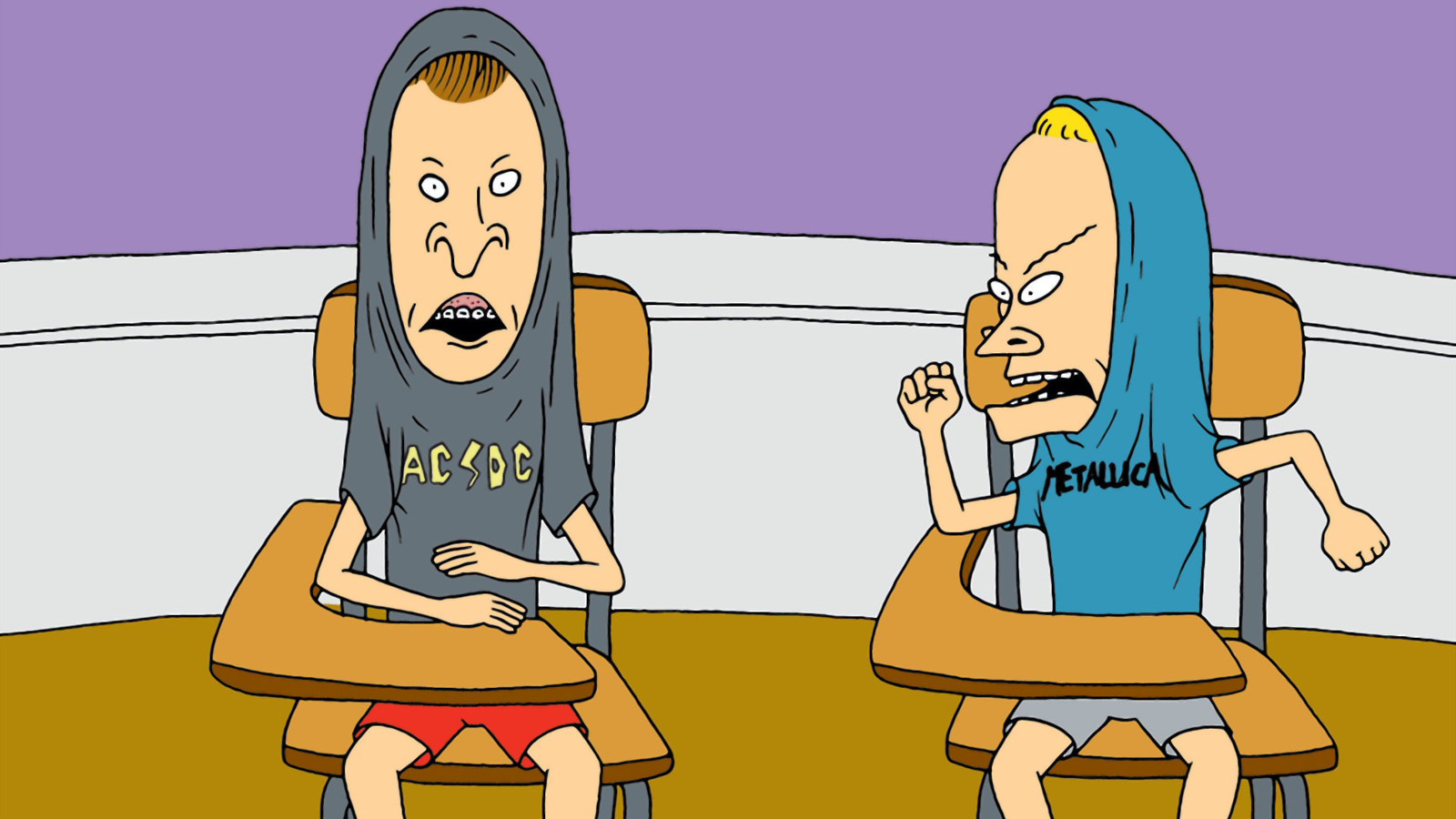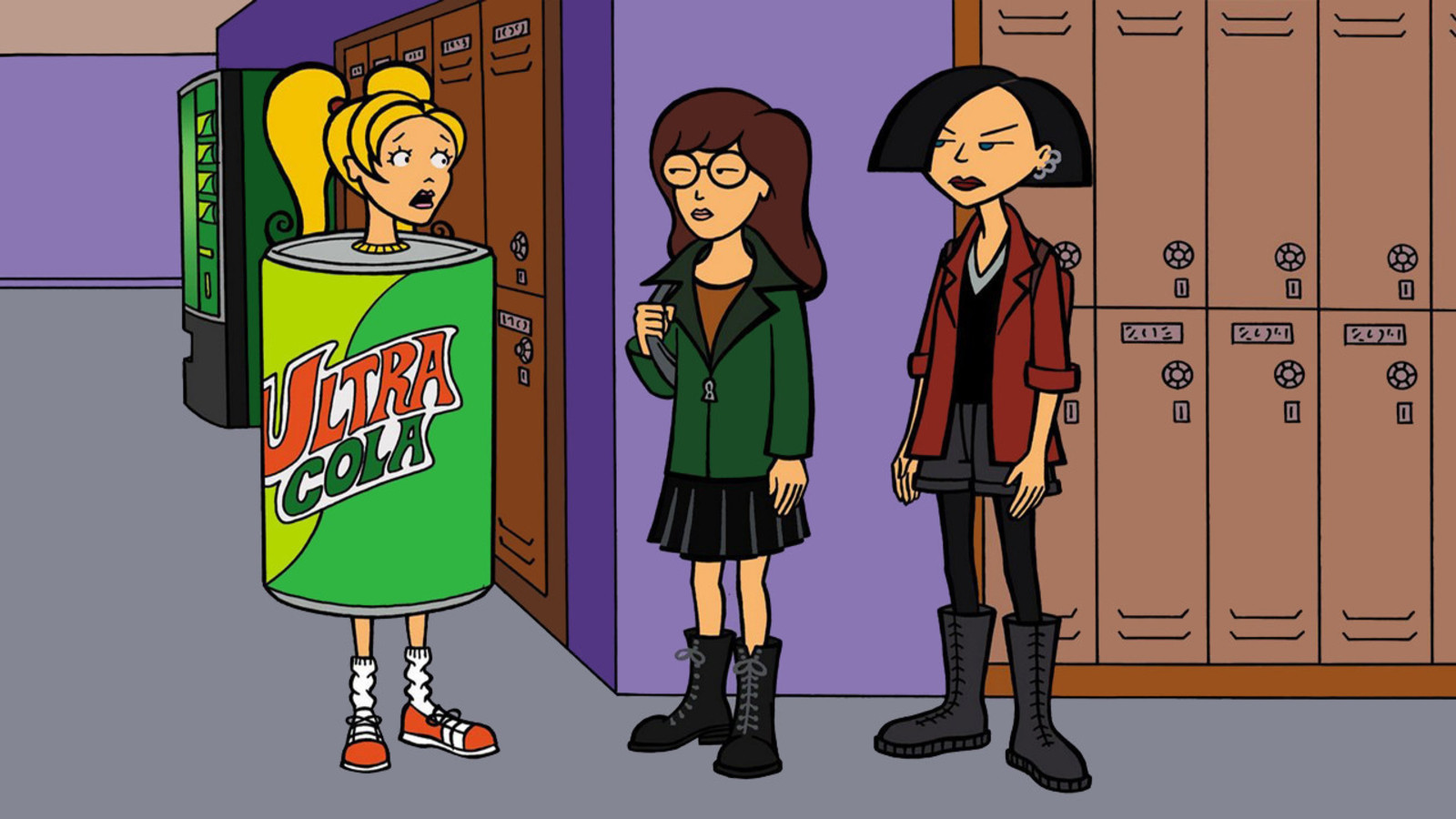
Lessons we learned from 'Beavis and Butt-Head'
On March 8, 1993, “Beavis and Butt-Head” first premiered on MTV. It ran for over 200 episodes over the next five years, including a full-length movie, and had a brief 22-episode revival in 2011. Since then, Mike Judge has enjoyed wild success with “Office Space,” “King of the Hill,” and “Silicon Valley,” as well as the cult hit “Idiocracy,” a film that essentially imagines a future where the human race is dominated by Butt-Heads. MTV shows almost no videos at all, but with “Jersey Shore” they’ve managed to find even dumber protagonists than their animated miscreants.
While Beavis and Butt-Head themselves were dumb, the show itself was not. It was cheap, it was violent, but it had a clever and subversive streak under its facade of idiocy. As we approach the 25th anniversary of that moment, it’s interesting to take a hard look back on the hidden brilliance of the series. Huh huh. We said “hard.”
Telling stories through the lowest characters
It’s a device that George Lucas lifted from Akira Kurosawa’s “The Hidden Fortress,” where the story is told not via the princess, or the warriors, but through the perspective of two lowly peasants. Those become droids in “Star Wars,” but the idea remains the same: tell the larger, epic story through dumb characters who are simply pulled along for the ride. “Beavis and Butt-Head Do America” has murder-for-hire, secret biological weapons, hit men, and massive highway accidents, but Beavis and Butt-Head themselves just wander through. It’s also what Tom Stoppard does in “Rosencrantz and Guildenstern Are Dead,” which retells the story of “Hamlet” via the play’s two most disposable characters, who have only a vague idea of what’s happening around them. And now you know why “Beavis and Butt-Head Do America” is like Shakespeare.
Mike Judge was an improv pioneer
The rise of Christopher Guest, Judd Apatow, and the Upright Citizens Brigade helped to mainstream an improvisational approach to comedy. But years before “The 40-Year-Old Virgin,” Mike Judge was improvising all of Beavis and Butt-Head’s video commentary. This may have been inspired by time and budget constraints, but the result showed that sometimes “winging it” delivers results that are just as good or better than painstakingly scripted work.
Beavis and Butt-Head do Twitter
A hallmark of the original MTV show was the interstitials, in which Beavis and Butt-Head react in real time to the videos they’re watching. They make fun of the bands and videos, despite often being gratuitously and woefully wrong about what they’re seeing. More often than not, the discussions devolve into petty arguments between the two of them. Honestly, this sounds a lot like Twitter. Is Butt-Head yelling, “Yes! This rules!” to a White Zombie video really any different than 5,000 people tweeting “Yas Queen!” after a Beyonce gets a new hairstyle?
In fact, you could argue that the video segments on “Beavis and Butt-Head” anticipated what the internet would become. A few years after the show premiered, suddenly there were entire websites devoted to recapping things that happened on television. Sure, they had letter grades, but is the AV Club rating an episode of “Jersey Shore” a D+ demonstrably different from Beavis yelling, “It sucks!”? The show may have done it as a way to stretch their brief animated segments to a half-hour show, but in a real way it pioneered the idea that commenting on the content can itself be the content. “Mystery Science Theater 3000” may have been ahead of them, but “B & B” knew that two minutes was a more realistic attention span than two hours.
Cornholio is a harbinger of a public health crisis

When Beavis eats too much sugar or drinks coffee, he becomes “The Great Cornholio.” He raises his arms in the air at a 90-degree angle, pulls his t-shirt over the back of his head, and wanders around shouting “I need T.P. for my bunghole.” Was this simply an absurdist exercise, or a dire warning about the youth of America? We now know that Oreos may be as addictive as cocaine, triggering stronger signals than the drug in the brain’s pleasure center. Since the show premiered, rates of childhood obesity and attention-deficit disorder have all skyrocketed. Not only that, meals high in sugar and caffeine can trigger irritable bowel syndrome, which requires a lot more T.P. Perhaps we are all Cornholio, and Beavis’ cries are ours. And our bungholes’.
Role models
Because Beavis and Butt-Head were kids who did misanthropic, violent things, the show was often blamed when real kids did violent things, regardless of whether they watched the show or even had cable at all. In response, the show did an episode where a reporter questions Butt-Head about why he was flying a kite in a thunderstorm, trying to determine whether he was inspired by Howard Stern, or rock music. The real impetus? Watching a documentary about Benjamin Franklin.
Sometimes there really are subliminal messages
There was a concerted effort to go after popular music and television in the late 1980s and early 1990s. Tipper Gore’s Parents Music Resource Center had pressured record labels into putting warning labels on albums a few years before, and Judas Priest was sued for “hidden messages” in their songs that allegedly drove two fans to suicide. In response, Judge really did include a hidden message in the scene where Beavis hallucinates and spouts gibberish in the desert. If you play the audio backwards, Beavis says, “I suggest that everybody go to college and study hard.” No word on whether Judge was sued by angry parents to recoup college tuition.
Buffcoat and beaver
When Beavis and Butt-Head are invited to go on “The Gus Baker Show,” the conservative Rush Limbaugh-lookalike calls them “Buffcoat and Beaver.” But that’s not an invention. During a Senate hearing on violence in television, an actual U.S. Senator, Fritz Hollings (D-SC), made the same malaprop. Of course, in the 25 years since those hearings, television has only gotten more violent, with the stuff in “Beavis and Butt-Head” seemingly quaint in comparison to “Archer” or “Breaking Bad.” Violence is still far more acceptable than sex, and the show anticipates this, too: “The Gus Baker Show” gets cancelled because Butt-Head moons the camera.
Speaking suckiness into existence
Beavis and Butt-Head wear AC/DC and Metallica shirts, but their lame neighbor Stewart wears a Winger shirt. That’s because Kip Winger told MTV he wouldn’t let the show make fun of him, so they doubled and tripled down on the mockery. Stewart’s lame family wears Winger shirts, so does his lame dog, and Judge continued to make fun of Winger on his subsequent show “King of the Hill.” The band claims it tanked their third album; the depiction of Winger as the embodiment of lameness was so evocative, they really did become unpopular. The show premiered in March of 1993, and by 1994 Winger had broken up.
Daria signals a cultural sea change

There wasn’t any connection between “Daria” and “Beavis and Butt-Head,” other than the new show borrowing the character. There’s no crossover episodes where Mr. Anderson shows up, like Sam Malone going to visit Frasier. But when “Daria” started and “B & B” ended in 1997, it did have the feeling of a cultural moment. The Lilith Fair started that summer and was the highest-grossing tour of the year, the Spice Girls were the best-selling group, and “Buffy the Vampire Slayer” premiered as well. Of course, two years later Limp Bizkit started a riot at Woodstock '99, which shows that even when culture changes, there will always be teenage boys who want to burn stuff.
More must-reads:
Trending in Entertainment
Customize Your Newsletter
 +
+
Get the latest news and rumors, customized to your favorite sports and teams. Emailed daily. Always free!

